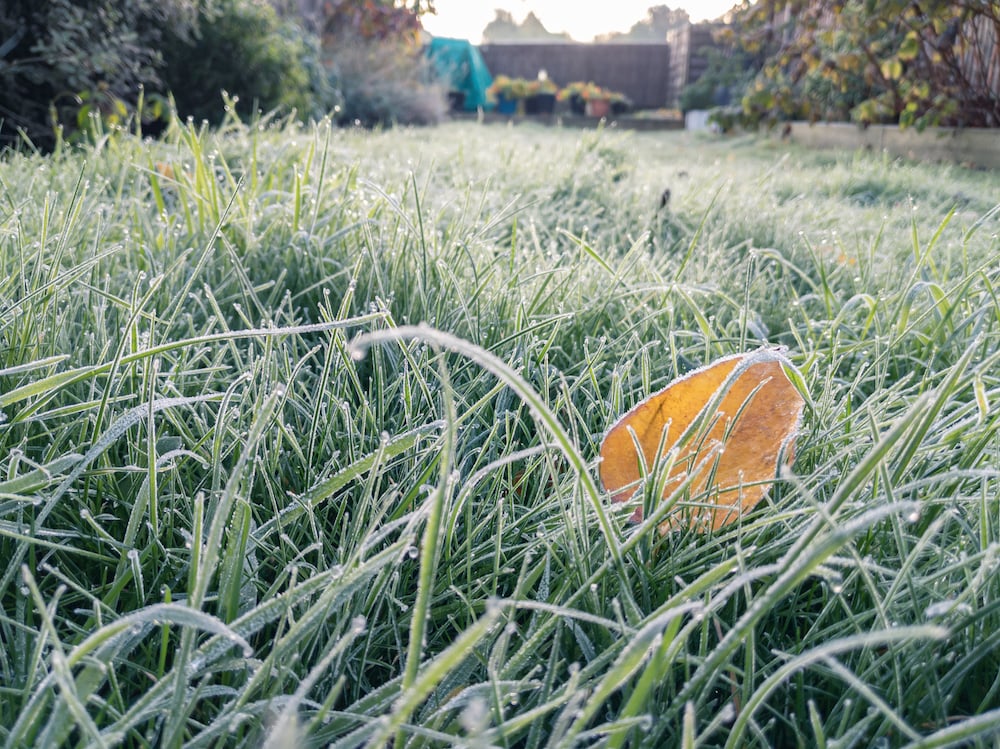Across Michigan, the first signs of frost tend to appear in mid- to late September, and then on a regular basis throughout October. Based on appearance alone, it’s often assumed soil is frozen at this point too and that no more fertilizer should be applied, as the soil can’t absorb nutrients. The reality is, however, that fertilizing after frost is a good idea — and we’ll tell you why here.
Lawn Frost Does Not Equal Frozen Soil
As the air becomes colder, it naturally gets drier too. This can be attributed to the fact that cold air can hold less water vapor than warm air. For frost to form, temperatures must be low enough that water molecules in the air freeze — but there also needs to be enough moisture in the air for this to happen in the first place. Taking into account that the air temperature can be several degrees warmer than the ground temperature, frost can occur at above-freezing temperatures.
What this means is that while a lawn may be dusted with frost, the soil isn’t necessarily frozen. The ground will not be frozen until daytime temperatures settle below 0℃, at which point the soil will become dense and rigid to the touch. Until that point, soil stays active and needs nutrients.
Tip: An easy way to check if your soil is frozen: pat it in various places. If it doesn’t give at all in response, it’s safe to assume the soil is frozen.
The Importance of a Late Fall Fertilization
While fertilization should happen several times throughout the year to keep lawns healthy, a late fall fertilizer application carries specific importance. Think of it as winterization for your lawn.
Winter as we know can be tough on lawns, from the weight of the snow itself to the freeze-thaw cycle that soil goes through on a regular basis. So, before a lawn goes dormant, it’s naturally beneficial to replenish the soil with nutrients to improve its root system, provide defense against winter injury and disease, and lead to better growth and a healthier appearance come spring.
As with other fertilizer applications, it’s important to make sure you don’t overfeed your lawn in late fall. Flooding the lawn with too many nutrients at once can cause salts to build up in soil and subsequently dry it out — what’s known as fertilizer burn. What’s left behind is yellow or brown grass that requires a generous amount of water (and time) to return to a healthy state. Be sure to only apply the recommended amount per the product label instructions, and spread it evenly across the soil.
Let Lush Lawn Handle Your Fertilization Needs Year-Round
At Lush Lawn, we’ve developed a lawn fertilization program that ensures Southeast Michigan lawns have the right amount of nutrients at all times of the year. This includes a winterizer fertilization in October that prepares lawns for the dormant season and reduces the impact of snow mold in the springtime.
Interested in our professional fertilization services? Use our convenient online feature to get a free quote — it’s that simple!
